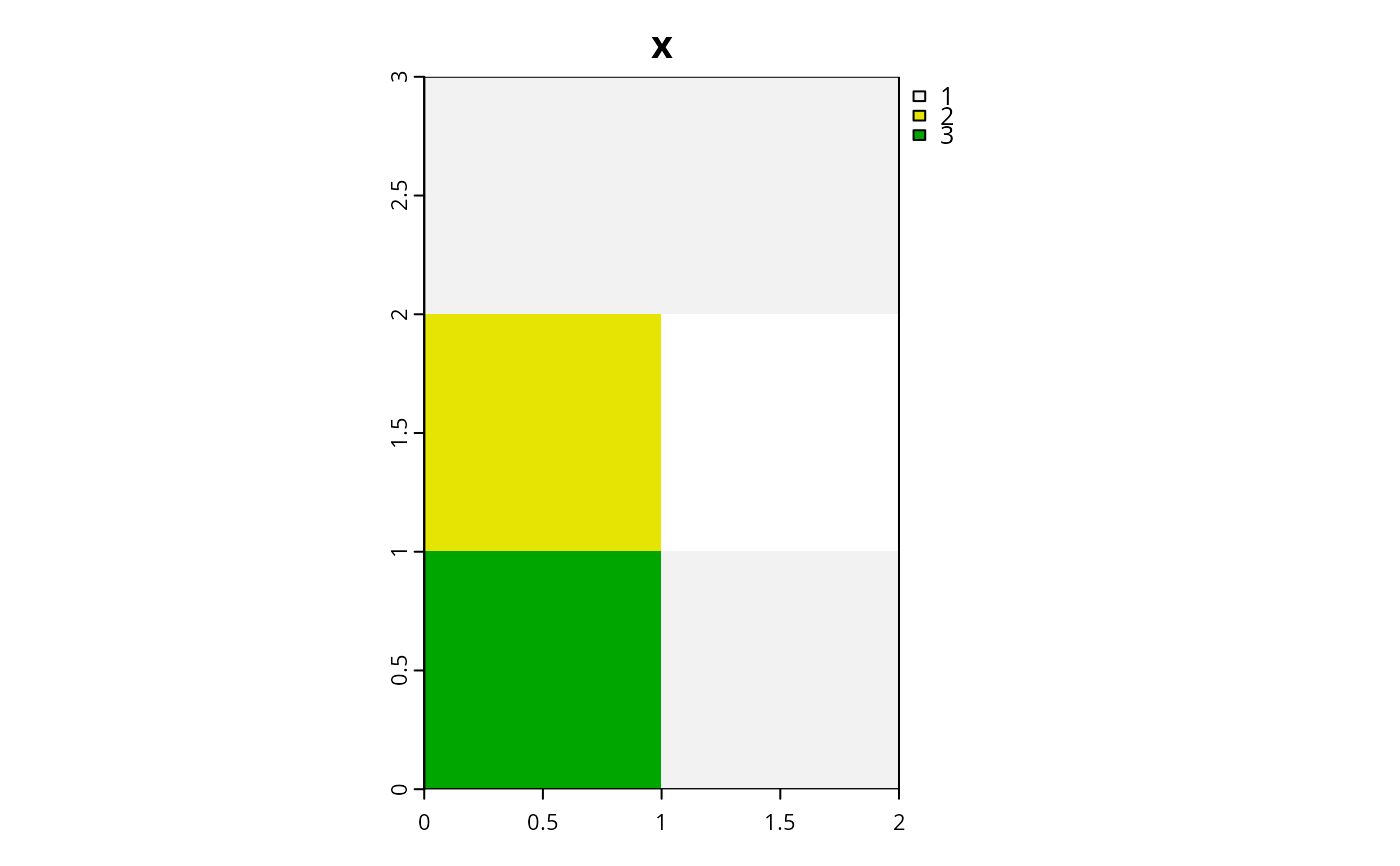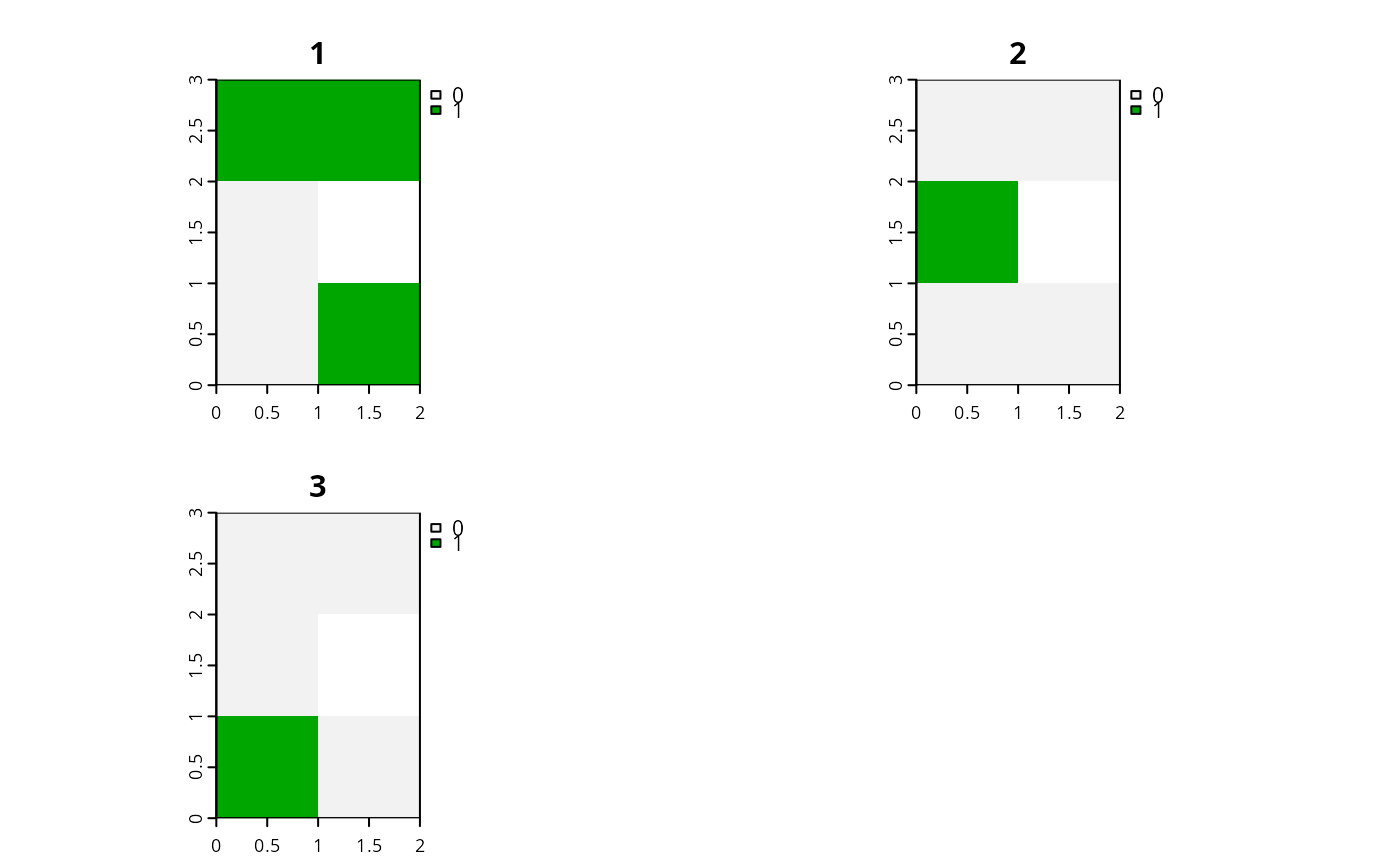Convert a single-layer terra::rast() object that contains integer values
into a multi-layer terra::rast() object with cell values denote the
presence/absence of a given integer value. This is methodology is also known
as "one-hot encoding".
Usage
binary_stack(x, keep_all = TRUE)
# S3 method for class 'Raster'
binary_stack(x, keep_all = TRUE)
# S3 method for class 'SpatRaster'
binary_stack(x, keep_all = TRUE)Arguments
- x
terra::rast()object with a single layer that contains integer values.- keep_all
logicalvalue indicating if all integers should be kept in the output. IfTRUE, the output will contain a layer for each sequential integer between 1 and the maximum value inx. IfFALSE, the output will only contain layers for integer values present inx. Defaults toTRUE.
Value
A terra::rast() object.
Details
This function is provided to help manage data that encompass
multiple management zones. For instance, this function may be helpful
for preparing raster data for add_locked_in_constraints() and
add_locked_out_constraints() since they require binary
rasters as input arguments.
It is essentially a wrapper for terra::segregate().
Note that this function assumes x contains integer values.
See also
The category_layer() function performs the reverse of this function.
Also the terra::segregate() function provides similar functionality.


